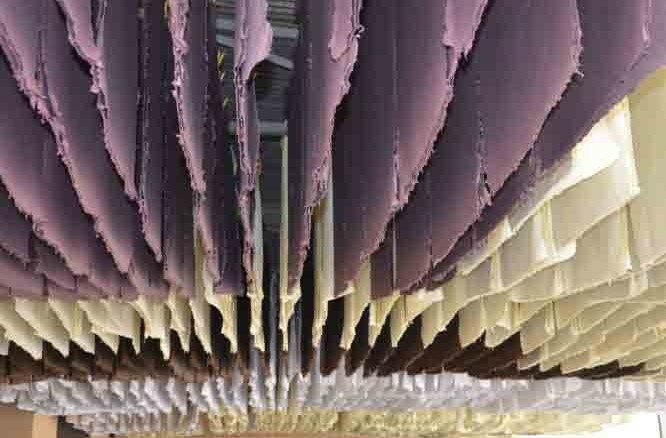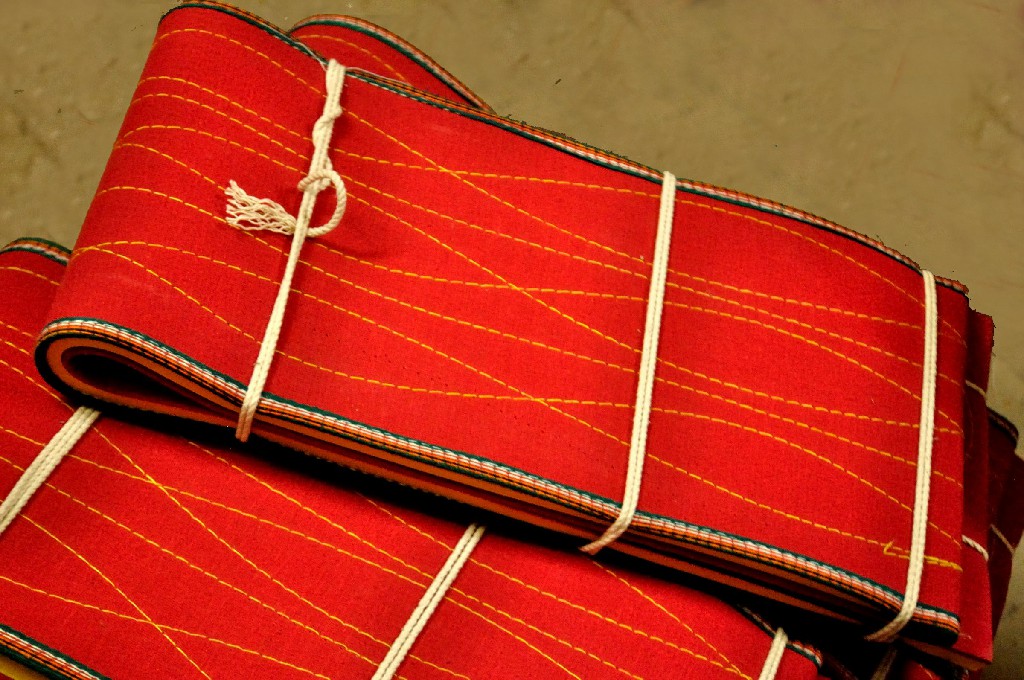On the 14th of January every month, the Jaipur sky is littered with colourful kites. You can be standing on any corner of the city and your eyes will be privy to the many pantangbaazi competitions being held at the many rooftops of the city. These diamond-shaped pieces of paper with diagonal bamboo supports is said to have been a favourite of Sawai Ram Singh. He established a Patang Khana or a Kite factory in Jaipur to make kites for him. The existence of these kites in ancient India is depicted in many ancient paintings.
The craft of papermaking as a whole was brought to India by the Kagzi community who is said to have learnt this craft from the Chinese. They were brought to India by Babur in the 16th century and were later called to settle in Sanganer by Maharaja Jai Singh of Jaipur. In Jaipur, this craft was patronised by Maharaja Sawai Ishwari Singhji and once brought to Jaipur the craftsmen were promised an abundant supply of water. Handmade paper was originally used by the royalty for official documents, calligraphy, miniature paintings, maintaining account books and making copies of the Holy Quran.
The main raw materials used for making handmade paper are water and hosiery cloth. The waste cloth is first bleached to remove colour and then cut into pieces by a rag chopper. The cloth is put in a beating (Hollandar) machine with water to be converted into pulp. The pulp is then poured into a meshed mould to drain away excess water and then dried out. During the drying process, flower petals and other dried additives can be added to decorate the end product.

The use of paper evolved from paintings and manuscripts to incorporate mire utilitarian uses for the same in terms of bahikhatas, a double-entry account. This gave rise to the practice of bahi, i.e. binding in red cloth. The red colour of the bookbinding is believed to be auspicious due to its association with Lakshmi, the goddess of wealth. Hand made paper is bound into books stitched together and covered with a cloth binding. The cover is bordered with either green, yellow and blue striped niwar to prevent the edges from tearing. Craftsmen who produce Bahi do not belong to any particular community. The labour is seasonal and hired on a part-time basis as the production is also seasonal. Production takes place only twice a year i.e during Diwali (October-November) and the beginning of a new financial year (March-April).

Craftsmen have now adapted to the tastes of urban consumers, tourists and the export market and have developed a wide range of bahi. Covers of bahi are now made of leather, zari fabric, silk and printed cotton while the paper used may be handmade paper with flowers, threads, rice paper or machine-made paper. Bahi are also being used now as photo albums, journals and diaries.
